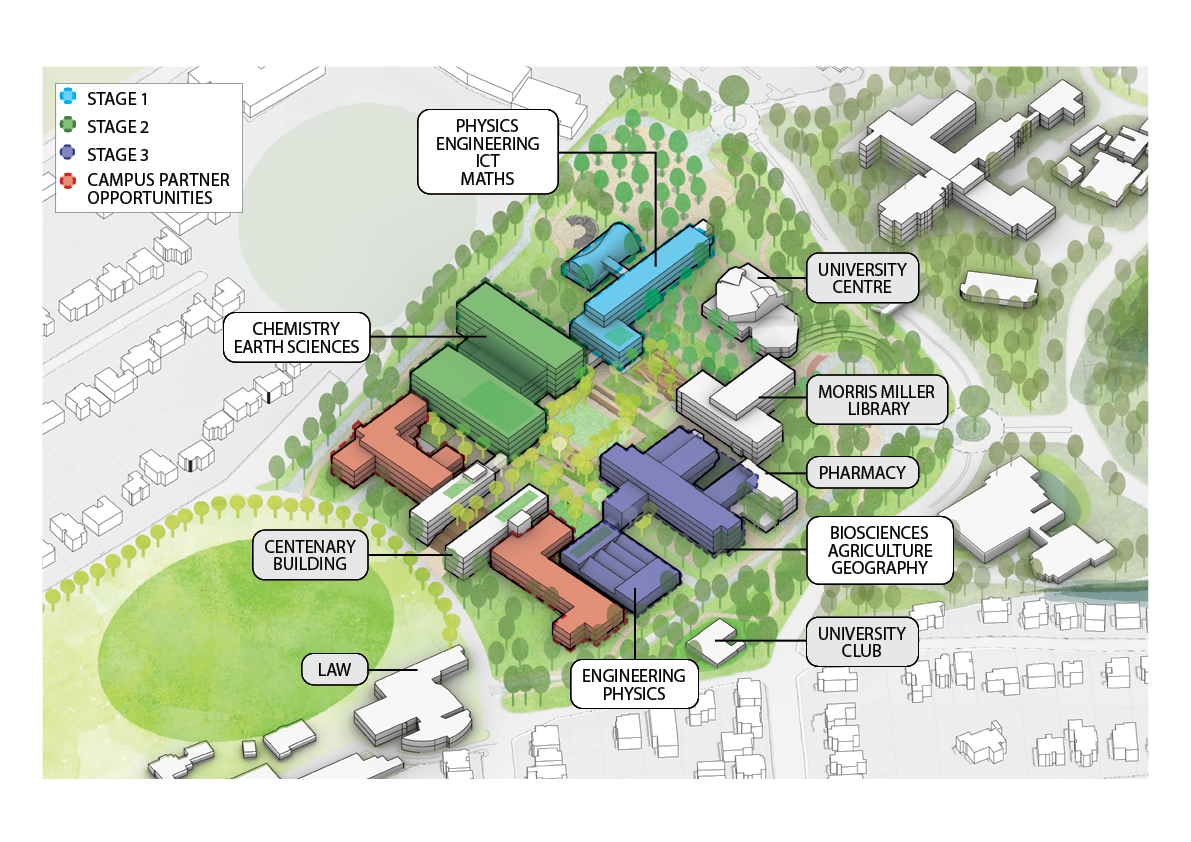A future direction for our Hobart campus
The University of Tasmania has embarked on a mission to bring contemporary campus facilities to life in Hobart that offer an exceptional educational setting for students while contributing to an important future for Southern Tasmania. Our plan is to create a Hobart campus comprising four key sites that provide students with experiences built around the best the city has to offer. This plan is contingent on securing significant government funding and, if realised, would see our university embedded across the Hobart community in the following way:
- A Science, Technology, Engineering and Mathematics (STEM) Campus at Sandy Bay. This would see a complete retrofit of some existing science buildings, the addition of new buildings and the enhancement of the natural landscape of the campus. It would provide opportunities for industry co-location, and school and community engagement.
- A City Campus that incorporates our existing medical sciences and creative arts teaching, learning and research spaces and provides a new home in the Forestry Building for the Schools of Business and Economics, Humanities and Social Sciences.
- A Historic Campus on the Domain, the University’s original home, which will play host to special offerings like our International School, Outdoor Education Program and aspects of our health offering.
- A Waterfront Campus comprising the Institute for Marine and Antarctic Studies facilities at Salamanca and Taroona.
This future direction for our Hobart campus has been informed and shaped by a range of factors – the evolving educational needs of Tasmania, staff and student requirements, feedback from our community, new major policy and funding directions for higher education set by the Federal Government, the State Government’s legislative plans regarding the Sandy Bay site and its desire to see STEM remain there, as well as the City of Hobart’s planning directions. Read the story.

